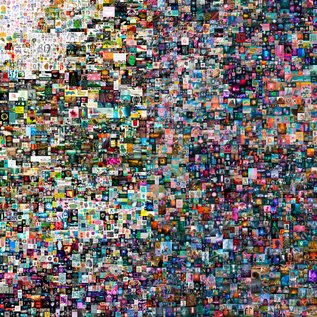No products in the cart.
Art in the Crypto Age
Art in the Crypto Age
Contributed by Neleisha Weerasinghe.
With the world constantly evolving and moving into technologically advanced operational processes, art has followed suit by pairing unique and scarce creations within crypto spaces for online sale. The process is secured through blockchain technology for trading purposes of digital assets. The spaces are combined with NFTs (Non-Fungible Tokens) for authentication of creations and are gaining traction in the tech and art communities, aided by the ongoing crypto currency hype started in 2009 with the creation of Bitcoin.
The distinctive feature of NFT begins with the word Non-Fungible, which elaborates on the original creation by stating that the value cannot be replaced by any replication or asset of the same value. This allows a single unique creation to remain authenticated at the same level in the digital world. The format was created with the primary goal of highlighting the rarity of content related to art in any form (Paintings, Images, Video or Music & evolving into other areas). The value of a coin generally will fluctuate depending on supply and demand, much like the stock market. However, if you buy an NFT, you own it for the rest of your life. It sits in your digital ‘wallet’ similar to a stock, and you can sell it whenever you want. The security of the crypto feature provided by blockchain technology ensures the safety of its use.
Blockchain technology is a decentralized, trust-free mechanism that provides open, verifiable evidence for artists as creators and art collectors as owners, as well as a permanent record of provenance over time. It is also used to authenticate and monitor physical artwork in order to reduce fraud and increase customer trust.
NFT Impact on Artists
Many artists around the world have lost money since the COVID-19 pandemic began. Tours and exhibitions were cancelled, traditional press releases were forced to change or fail and it became mandatory for artists to promote their albums and art online via livestreams or rely on crowdfunding platforms for a living. As a result, cryptocurrency, also known as digital assets, appears to be a good fit for revenue-generating digital album publishing and promotion.
Check out the details on this sold Beeple NFT here.
Cryptocurrencies used to have a low level of trust, with many dismissing them as a scam. However, in the case of NFTs and artists, they are poised to transform the way processes operate, contracts are awarded, and art is valued. The technology is transparent about ownership and artists can also profit from royalties of their own work.
When a work of art is sold, the collector is generally (although it is possible to share parts) prohibited from redistributing or reproducing it in any form, including physical copies. It is a one-of-a-kind piece because NFTs is can create manipulated artificial scarcity and sharing will defeat that purpose if intended. The creator on the other hand, is free to share 3D animations on social media and the internet as long as they are not resold. Furthermore, as previously sold digital artwork becomes more widely available online and more common, the work gains value.
Why NFT’s?
The reason for collecting NFTs varies from person to person. Some people prefer to buy art at a lower cost and then resell it for a profit. Others are true collectors who recognize the value of digital properties. They recognize that having NFTs in place gives them greater ownership importance as we move further into a digital world of immersive technology.
Commissions will become a bigger part of the picture as people become more aware of the investment value of digital collectibles. NFTs that promote a company’s brand are currently popular, with the potential to monetize aiding expansion into other industries in the near future.
How can artists get in on it ?
It is strongly advised to begin by researching and becoming acquainted with information pertaining to NFTs. Understanding the history, uniqueness, and purpose among other factors, will undoubtedly help in the transition to the digital stage.
Once a decision is made to proceed with the selection of an artwork distribution platform, crypto wallets are required. In order to complete processing fee structures and validate transactions, the wallet requires the acquisition of cryptocurrency.
You’ll need to weigh your options before deciding on a site to sell your NFTs on. Some are curated, which necessitates a submission and subsequent approval process.
Once the basic details are sorted out you are ready to progress with trading your artform online.
Good Luck!
Please note that cryptocurrencies have an extremely negative impact on climate change due to generating high levels of greenhouse gas emissions.
Read here for more on this. Featured image credit: QuoteInspector.com



